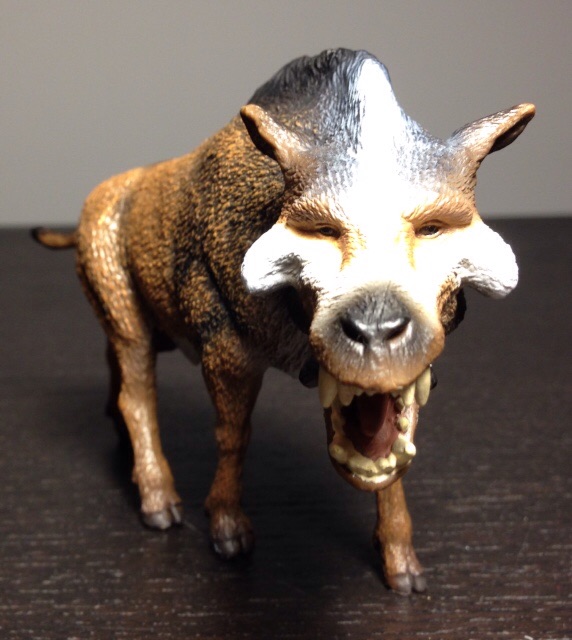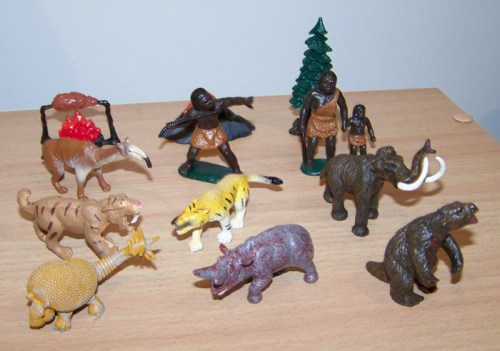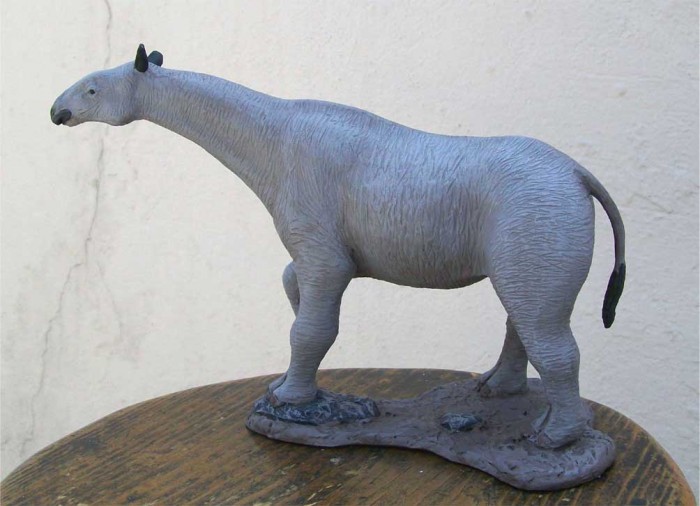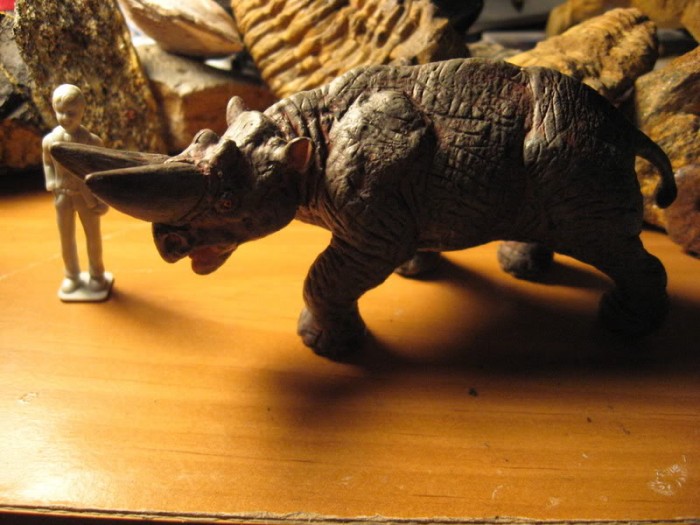Age: Oligocene
Review: Hyaenodon (Mojö Fun)
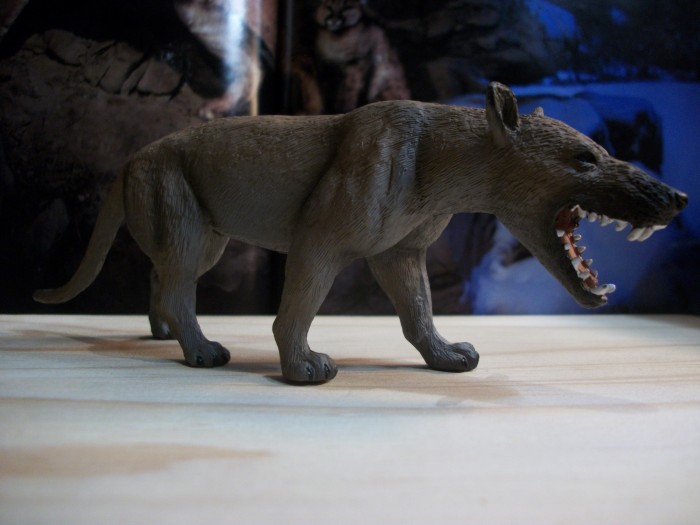
4.7 (9 votes)
Hyaenodon was an interesting predatory animal that first evolved 42 million years ago and lived from the Late Eocene through to Early Miocene. The first thing to know about them is that they are not related to hyenas. In fact, they were a creodont, a long extinct group of mammals that did not survive the Miocene.
Review: Hyaenodon (AAA)
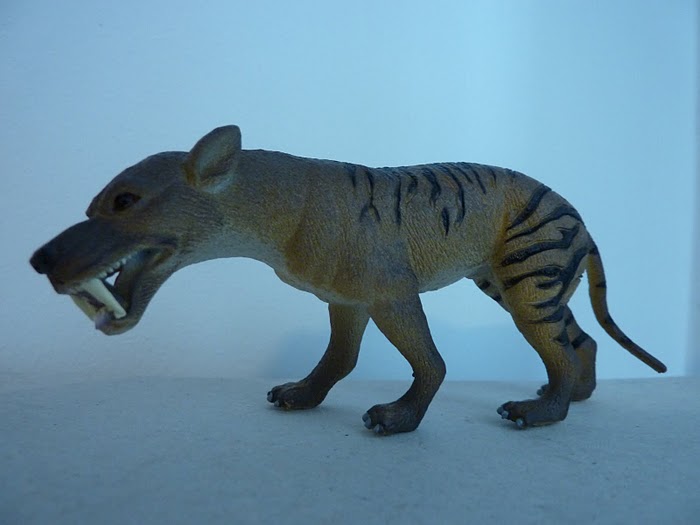
3.5 (8 votes)
Review and photos by Mihnea (Wildheart)
Existing for approximately 26 million years, Hyaenodonts were some of the largest predators of the Late Eocene and Early Miocene epochs. Their name comes from the sharp hyena-like teeth used to tear apart possible prey. The skulls of these animals were huge and well equipped for hunting, but their brains were quite small, something typical in primitive carnivorous mammals.
Existing for approximately 26 million years, Hyaenodonts were some of the largest predators of the Late Eocene and Early Miocene epochs. Their name comes from the sharp hyena-like teeth used to tear apart possible prey. The skulls of these animals were huge and well equipped for hunting, but their brains were quite small, something typical in primitive carnivorous mammals.
Review: Entelodont (AAA)
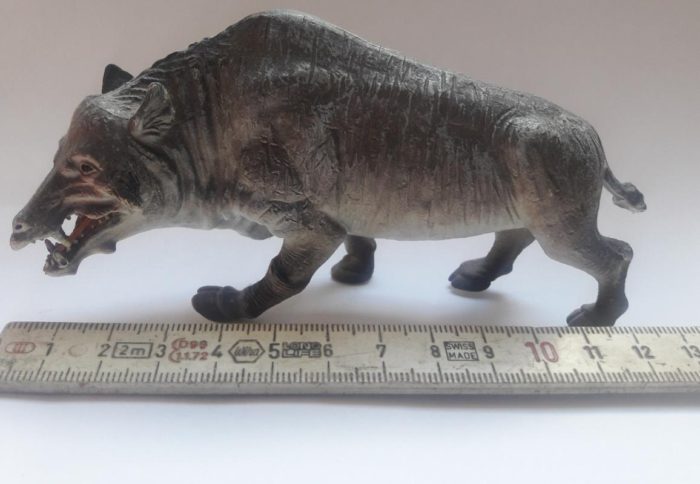
4 (9 votes)
Admittedly, there were lovelier animals to have walked the earth in prehistoric times than entelodonts, omnivorous beasts that were two metres tall and four metres long. Entelodonts were especially abundant in what are now Mongolia, China and Northern America and strolled through the landscape searching for any kind of food in the Eocene epoch – mainly probably carrion.
Review: Prehistoric Life Toob (Safari Ltd)
Review: Indricotherium (Malcolm Mlodoch for Fauna Casts)
Review: Paraceratherium (Collecta)
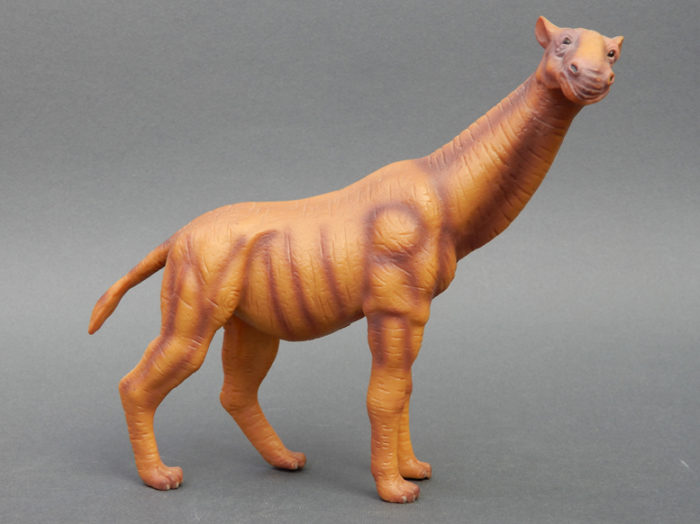
3.1 (15 votes)
Photographs by PhilSauria
Paraceratherium, also commonly known as Indricotherium or Baluchitherium, was a genus of gigantic hornless rhinoceros-like mammals, belonging to the family of the Hyracodontidae. Their fossils have been found in many parts of Asia, including Kazakhstan, Pakistan, India, Mongolia, and China.
Paraceratherium, also commonly known as Indricotherium or Baluchitherium, was a genus of gigantic hornless rhinoceros-like mammals, belonging to the family of the Hyracodontidae. Their fossils have been found in many parts of Asia, including Kazakhstan, Pakistan, India, Mongolia, and China.

